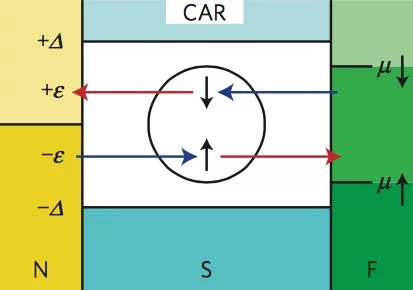Superconducting spintronics has emerged in the past decade as a promising new field that seeks to open a new dimension for nanoelectronics by utilizing the internal spin structure of the superconducting Cooper pair as a new degree of freedom. Its basic building blocks are spin-triplet Cooper pairs with equally aligned spins, which are promoted by proximity of a conventional superconductor to a ferromagnetic material with inhomogeneous macroscopic magnetization. Using low-energy muon spin-rotation experiments we find an unanticipated effect, in contradiction with the existing theoretical models of superconductivity and ferromagnetism: the appearance of a magnetization in a thin layer of a non-magnetic metal (gold), separated from a ferromagnetic double layer by a 50-nm-thick superconducting layer of Nb. The effect can be controlled either by temperature or by using a magnetic field to control the state of the remote ferromagnetic elements, and may act as a basic building block for a new generation of quantum interference devices based on the spin of a Cooper pair.
Reference: M.G. Flokstra et al, Nature Physics, adv. online publ (2015)
Read full article: here


